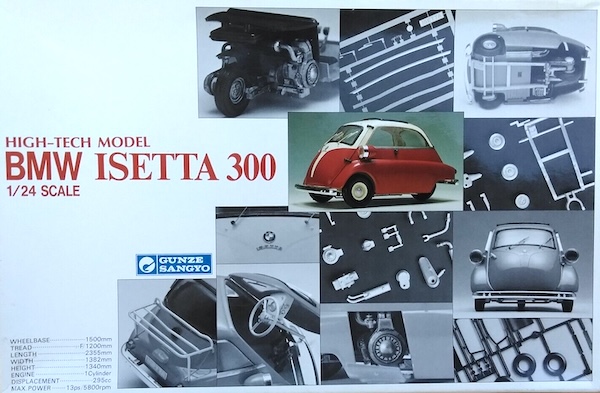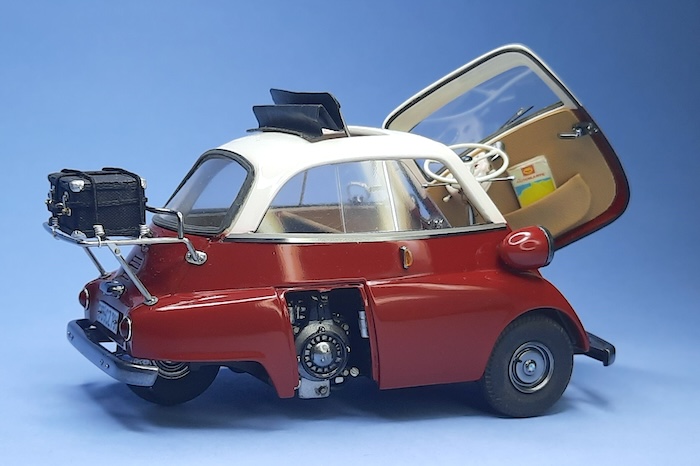
Feature article with Rafal ‘Raf’ Sikorski
“All quirks and features” of The World’s most popular Bubble Car
- 2019 Scale Model World Best Civilian Vehicle and Albion Alloys Trophy Winner.
- 2021 Model Kraft – Best in Show.
- 2022 London Plastic Model Show – Gold Medal
Just before we get started, here’s a look at how it all turned out…

Because “Necessity is the mother of invention”… micro-cars origins.
A global economical struggle after WW2, consequently with individual citizens difficulties, created extremely favourable circumstances for the production and development of all modes of road transport. On one hand, the HGV transport played a key role in rebuilding countries infrastructures to accelerate and drive economic growth. On the other hand, immediately after all military actions ended, various types of cars were desperately needed to relocate or migrate citizens. In early years, to move people around, HGVs that had survived the war were mostly used. Individual transport (excluding cycles and motorbikes) was simply too exclusive and expensive for the wider population. At this point, it’s worth highlighting is fact of the huge role of cycles and motorbikes for the most destructed in WWII countries. These basic forms of transportation were often the only ones to be able to move people and small loads around the ruins. It can be said, that they laid a foundation for later, more advanced four- wheel transport.
Over time, in slowly gaining economic strength, the important role of transport started to expand further into peoples lives. A public road transport system (often very rudimentary) came into play in European countries, to transfer citizens for small distances, mostly to and from work.
Now a clear necessity, to carry people not only for duty purposes, started to be recognized by motoring industry. This demand was partially satisfied with cycles and motorbikes, generally inexpensive to buy and run, which was a highly adequate concept for a harsh post-war times. Even so, the general universality of two-wheeled vehicles was not meeting all market demands. Now, whole families, often with small baggage wanted to travel together on a well deserved holiday, and to socialise. The idea of a hybrid, combining a motorbike’s low-budget attributes with car-like characteristics started to be developed.
Several manufacturers around the World started to design and produce motorbike-car hybrids; microcars. They would eventually be able to carry an average family in car-like comfort (subject to fussiness!) for a fraction of the price of the fully dimensional car. These commercially inviting attributes earned them a worldwide popularity, and they quickly landed on production lines in Europe, South America and Japan. The European microcar production/assembly covered almost all regions from Great Britain, France, Spain, through Italy, Germany to Eastern Europe, where domestic designs went to semi-mass production. Another chapter of microcars manufacturing was carried out in South America, in Brazil and Argentina under an Isetta licence, and in Japan, where Subaru 360 pioneered the Kei cars trend.
The peak of their popularity was between 1950-1970, with a special accent in late 50s during the Suez fuel Crisis. In these years the most recognizable microcars were, Peel (Trident and P-50 the smallest ever mass produced car), Scootacar, Goggomobil, Bond Bug and whole class of “bubble cars”. A group nickname “bubble” originated from their characteristic bulbous window/ bodywork style and amongst all microcars, where Isetta was a leading brand. Microcars from this “sassy club” were produced by; BMW (Isetta), Messerschmitt (KR series; 175, 200, and 200 Super), Heinkel (Kabine), Brutsch (Mopetta), and on UK soil by Peel (Trident), and Dunsford Tools/ Isetta Great Britain (British BMW Isetta).